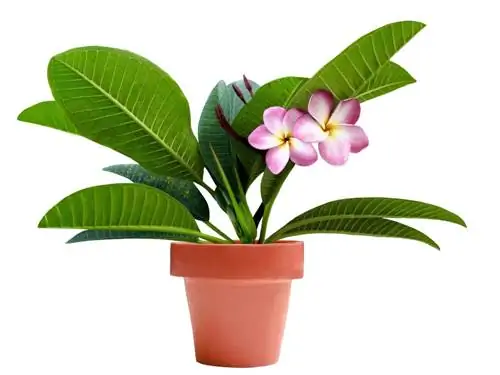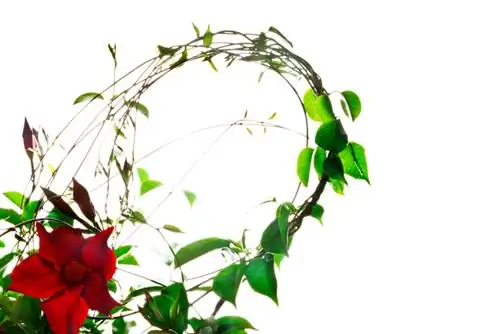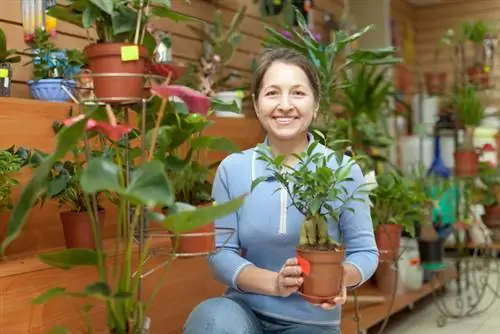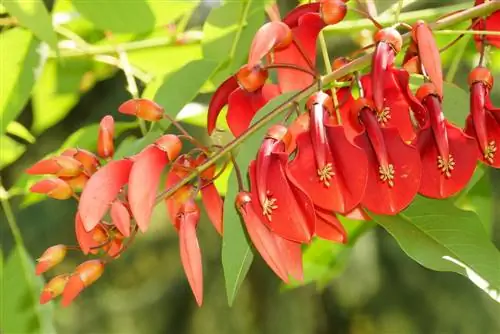- Author admin [email protected].
- Public 2023-12-16 16:46.
- Last modified 2025-01-23 11:21.
In its homeland in Central America and the Caribbean, the frangipani grows into stately trees. In our case, the succulent plant, also known as plumeria, can only be cared for as a houseplant. What do you have to consider when keeping things in the room?

How to care for frangipani as a houseplant?
Frangipani as a houseplant requires a bright, warm location, well-ventilated soil during care and regular watering without waterlogging. Fertilize every two weeks until flowering, without fertilizing during the dormant period. You should repot with caution and after intervals of several years.
The right location
In its homeland, Frangipani grows in very warm, sunny locations. When caring for it as a houseplant, you must therefore ensure that it has a sufficiently bright and well-tempered place. In summer she appreciates a place on the terrace or balcony.
Frangipani belongs to the dogpoison family and, like all plants belonging to this genus, is poisonous. Therefore, look for a location out of the reach of children and pets.
You should always wear gloves when caring for yourself, as the milky sap contained in the leaves can cause skin irritation.
Care for frangipani as a houseplant
When pouring frangipani, sensitivity is required. In summer it needs a lot of water without causing waterlogging. Watering is always done from below so that no water gets on the leaves.
Plumeria is only fertilized until flowering begins. Fortnightly fertilizer applications are completely sufficient. From the flowering period until the next spring, you should no longer fertilize frangipani, as the plant will then develop no or only a few new flowers.
Cutting is not necessary. Frangipani branches itself after flowering. If you want to artificially branch Plumeria, cut off the main shoot or later the shoot tips.
Don’t repot frangipani too early
Plumeria is sensitive. This particularly applies to repotting. Wait at least two years, preferably three, before moving to a new pot. If the frangipani is older, it is only repotted every five years.
After repotting, you must not fertilize the houseplant for several months.
Permeable soil is suitable as a substrate. You can use the substrate from
- Coconut shavings
- Perlite
- Sand
- Cactus Soil
put it together yourself.
Tip
The types of frangipani most commonly grown as houseplants are Plumeria rubra and pudica. Plumeria alba, which is often confused with the pure white-flowering variety rubra, is more difficult to care for indoors.






